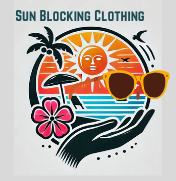Are you aware of who needs UPF protection? Do you tend to skip thinking about the end of a fun day in the sun? Especially one that has all of you out in the bright sun for many hours?

Is it usually a surprise that anyone gets sunburn when your family has a day at the theme park? Or a long day at the beach? I know, the time passes so quickly, and how did your Dad get such a sunburn?
What about your daughter finding a new friend to play with down at the pool at the hotel. They had so much fun, but that sunburn on her back?
What about yourself there on your neck where the sun reached you longer than you were aware? That is going to be sore tomorrow.
Who would you say is exempt from needing some help to protect themselves from sunburn? Or is anyone except for protecting their skin from the sun?
Do Children Require Special Protection?
The increasing incidences of skin cancers in the past decades are strongly related to the increase in popular outdoor activities. This trend is increasing the opportunites for what we now know as recreational exposure.
The World Health Organization reports that our habits are changing. And that we are spending more of our fun times outdoors. Young families look for and make more opportunities for getting outside.
With the slow drift of the population to more central areas, there are fewer who live the agriculture life style anymore. The weekends have more leisure time with out farm animals and crops to tend to.
Overexposure to sunlight, as a result of our recreational exposure, is the medical world’s claim for the reasons our skin is gets too much sun. They are warning us about the need for better skin protection.
Exposure for longer periods of time, and more often is resulting in harmful effects on the skin, eye, and immune system of the members of our families, young and old.
With weekends off work, people have time for outdoor hobbies and activities every weekend. Each one leaving it’s layer of too much sun exposure for our skin.
Medical experts believe that we can prevent four out of five cases of skin cancer. That is a frightening fact that most UV damage is largely avoidable!
Why Children Require Special Protection
There is a reason why children’s skin requires special protection. According to statistics, children are still maturing and strengthening their skin health all through until their late teens.
When they have a sunburn before their skin is mature there is more opportunity for several problems with their skin. This makes them more susceptible to environmental threats than adults with more mature skin are.
Sun exposure during childhood and adolescence seems to make the child more susceptible to melanoma as well as basal cell carcinoma and the least deadly squamous cell carcinoma. Skin cancer is not a laughing matter.
As data is proving that sun exposure is so dangerous, helping our family become more sun aware is important. It is the first step in protecting your skin. Knowing how dangerous too much sun is.
A major portion of a person’s lifetime exposure occurs before age 18. This just gives the overexposure episodes have longer to do damage to the skin, as well as to their overall skin health future.
The findings about the immune diseases that are showing up in our youth and young adults are pointing to overexposure to the sun as a common denominator.
Issues in former generations that show up in the later years of their lives are showing up at earlier ages. Early exposure gives the skin that much longer to get damage. There will be more accidental as well as just plain careless exposure.
This puts them at risk for longer years to endure with a poorer quality of health. Is this what you really want for your child?

Senior Citizens and Their Risks From The Sun
Seniors are at the other end of the risk factors from children.
We have had our sunburns, and overexposure and even some have had skin cancer as I have already.
My free runs at healing with no problems are gone. The risk factors for those of us who have had skin cancer double! For seniors to risk sunburn is absolutely ridiculous. No golf game is worth it, no time on the lake!.
Skin protection is a must and is so easy. Slip on that sun blocking long sleeve loose-fitting shirt and protect your skin. Grab the sun blocking hat and sunglasses. Apply sunscreen on the parts of your skin not covered.
Don’t tempt fate another time! Seniors don’t heal from skin cancer surgery as quickly as they did when they were younger.
Those of us in our generation have pushed the envelope too many times already. Older skin sunburn is easier and may never heal completely healthy.
Is Sun Blocking Clothing Worth It, or Just a Pricey Trend?
Clothing with a UPF rating may not be necessary for everyone.
But for those who really need protection from the sun, it gives a level of certainty.
Have you noticed a trend in clothing stores? Garments are labeled with UPF (ultraviolet protection factor) numbers. Have you wondered if it is a good idea? Or is it just a new trend that will be proven ineffective in the next marketing cycle?
Clothes with this added benefit can be expensive. I wondered if they are worth the splurge? How much better are they at protecting my skin from the harmful solar rays?
We do know that it’s important to protect yourself and your children from ultraviolet radiation.
Acting U.S. Surgeon General Boris D. Lushniak told a Washington Post reporter that the number of melanoma cases has nearly tripled in three decades. Yes, melanoma is the most deadly sun-caused skin cancer.
The latest year that full data is available is 2019 in the United States, 88,059 new cases of melanoma of the skin were reported.
In this same year, 8,092 people died of this cancer.
According to statistics, 63,0000 new cases are diagnosed yearly.
It causes a rounded-off number of 9,000 deaths a year.
Skin cancer is a major public health problem that requires immediate action, states the CDC (Center For Disease Control) for the US.
However, how much protection you need depends on many things. Your risk factors affect your protection needs.
Your skin type, where you live. Are you near snow or water! The time of day when you are out and exposing your skin. Do you have a history of skin cancer? These are just a few of the risk factors.
Based on this information, do you think you would benefit from UPF Clothing?
A Word About Fabrics And How They Protect
First off, all clothing protects your skin. However, some fabric protects a whole lot better than others.
Consider the traditional clothing of the people who live in desert climates. Usually, it covers them from head to toe.
When clothing is chosen and used correctly, it becomes the best form of sun protection you can find,” according to the Skin Cancer Foundation. You can have your fun in the sun and protect your skin as well.
The construction of the fabric, how tightly woven, and how dense the fabric is are important factors. The fiber type, is it polyester or nylon? They are far superior to cotton, rayon, and linen.
Darker colors block the sun’s rays better than lighter ones do.
Does the garment fit loosely or is it stretched? Stretching allows spaces for UV penetration.
Is the garment wet or dry? Dry clothing is better than wet. Is the garment new? Or is it worn and fading?
Sometimes fabrics used for constructing sun blocking clothing are treated with chemicals that will block the sun.
How Long Does The UPF Factor Last In Clothes?
Regardless of how the sun blocking protection is acquired, that garment should retain its ability to block the sun even if:
The American Melanoma Foundation says, that a UPF label means that the clothing should have been made to retain its ability to block the sun
Unless the garment is laundered 40 times
The garment is exposed to 100 fading units of simulated sunlight, which is equal to 2 years of light exposure insuring 2 years of normal exposure.
If intended for swimwear can be exposed to chlorinated water.
The Melanoma Foundation also says that the higher the number factor of your UPF protection, the better the protection.
You get an excellent level of ultraviolet protection from clothing labeled UPF 40, 45, or 50+.
A voluntary labeling system has been in place since 2001. Manufacturers’ advertising claims are regulated by the Federal Trade Commission.
How Important Is UPF Clothing?
You don’t have to buy specially made clothing to get sun protection. Some items of clothing, such as denim and corduroys, are among the most sun-protective of all garments. They may not have UPF labels but will protect your skin.
A dark-colored, tightly woven, loose-fitting, long sleeve shirt and a good sun hat will give you great protection. You don’t have to spend a fortune for protection if you don’t want to. Don’t forget your sunglasses.
But clothes specially made with UV protection in mind can be lighter weight and lighter in color. They can be more comfortable, especially for outdoor activities.
Consider a specially made UPF shirt, with long sleeves and a double layer of fabric at the shoulders. That extra fabric is in a high UV exposure area especially if constructed with a lightweight material. This kind of garment can give the wearer superior comfort and coolness as well as added sun safety.
6 Tips For Shopping On A Limited Budget
UPF clothing is often on the higher-priced end.
New innovations are allowing it to become more stylish. However, most garments are on the sporty side.
You’ll see plenty of mixed message items like sun-protective clothes that are sleeveless, or that have short sleeves.
Sunscreen bikinis and bathing suits are not uncommon. (for a better level of protection, wear a long-sleeved sun-protective rash guard over a bathing suit.)
You can find lower prices if you:
1 Check specialty shops for sales.
2 Shop off-season. You’ll pay more in the high season (spring and summer). Prices are better during the off-season. (selection may be few)
3 Check out your online sources.
4 Use a laundry additive. Some sun-protective clothing relies on an infusion of chemicals like titanium dioxide or Tinosorb.
You can buy a Tinosorb laundry additive called Sun Guard to use at home on clothes you already own. Added to a detergent, this product increases the UPF of the clothing. Protection lasts through 20 washes.
(Sun Guard is made by Rit. It doesn’t work on polyester or acrylic fabrics. To get shorter-term increased protection you can use products known as fabric brightness or treatments. They all infuse into the fiber, making it a tighter weave and beefing up protection.)
5 Check online stores for sales. Use UPF as your search term and look for discounts in all UPF Clothing Brand stores
6 Be alert. The best deals may be the ones you stumble on while shopping for something else. Or on the sale rack or counter. A denim loose-fitting long sleeve shirt from cotton and poly blend was a good find for me.
UPF Clothing Is Becoming More Attractive
Have you been wearing UPF clothing? How do you feel about paying extra for? Tell us in the comments below.
In the past, sun-protective clothing hasn’t always been the most stylish. Now, many trendy UPF clothing options can help you safely have fun in the sun. The colors are also georgous as well.
Don’t forget to apply sunscreen on the parts of your body that aren’t covered.
UPF is clothing is a great help for protecting your skin from the sun, but can’t work if not worn. Also remember your hands, your face, and your legs.
SPF And UPF
UPF stands for Ultraviolet Protection Factor. This is the clothing version of SPF.
A UPF rating is given to fabrics. This indicated the amount of protection you can expect from the sun. A UPF rating is based on the construction, weight, and color of the fabric in question.
When using clothing as a form of sun protection, the fabric must be durable and tightly woven in order to be effective.
A tighter weave of the fabric decreases the spaces between the fibers. Blocking the holes that UV rays can pass through. Different materials can be better at deflecting UV rays. Polyester and nylon, are well-known fibers and they protect because of the way their molecules are structured.
If you’re not consistent about wearing sunscreen, sun-protective clothing may be the best way for you to protect your skin.
As long as the fabric covers your skin, you should be protected all day long. So much better than sunscreen which requires regular reapplication.
Will Regular Clothing Protect Me?
Most clothes are made of loosely woven cloth in the summertime. They don’t offer the necessary protection from the sun without the use of sunscreen.
Your plain white T-shirt only has a UPF factor of about seven.
When that T-shirt gets wet, that protection drops to about a UPF of only three. You should also consider how much skin you’re covering with clothing. The more skin you cover, the better.
If you’re looking to protect yourself from skin cancer, the Skin Cancer Foundation recommends looking for clothing with a UPF of at least 30.
A UPF of 30 to 49 offers very good protection. UPF 50+ is excellent.
Your choices are growing. Every season the companies who make UPF clothing are growing their ability to deliver style, comfort, and protection.

Sami’s Take On Who Needs UPF Protection?
As we learn how to use the clothing we have in our closets that will protect our skin from the sun, we can stay healthy while we shop for the actual UPF garments.
As I am limiting how much I spend on UPF clothing, I plan to do some real shopping and see how far I can make my money stretch.
The worn-out denim shirts will be laundered in a fabric brighter this fall.
We will be doing some yard work, and the sun is hot and direct here in my part of central Texas even in the fall. The wintertime sun is dangerous too.
Unfortunately, I have found that several pieces of my existing wardrobe do a great job of protecting my skin. So I don’t actually need anything right now.
As a senior citizen, I can’t afford to be exposed to the sun and have my skin unprotected. I have already had too many skin cancers.
Where are you in the safe pursuit of life and fun in the sun?
